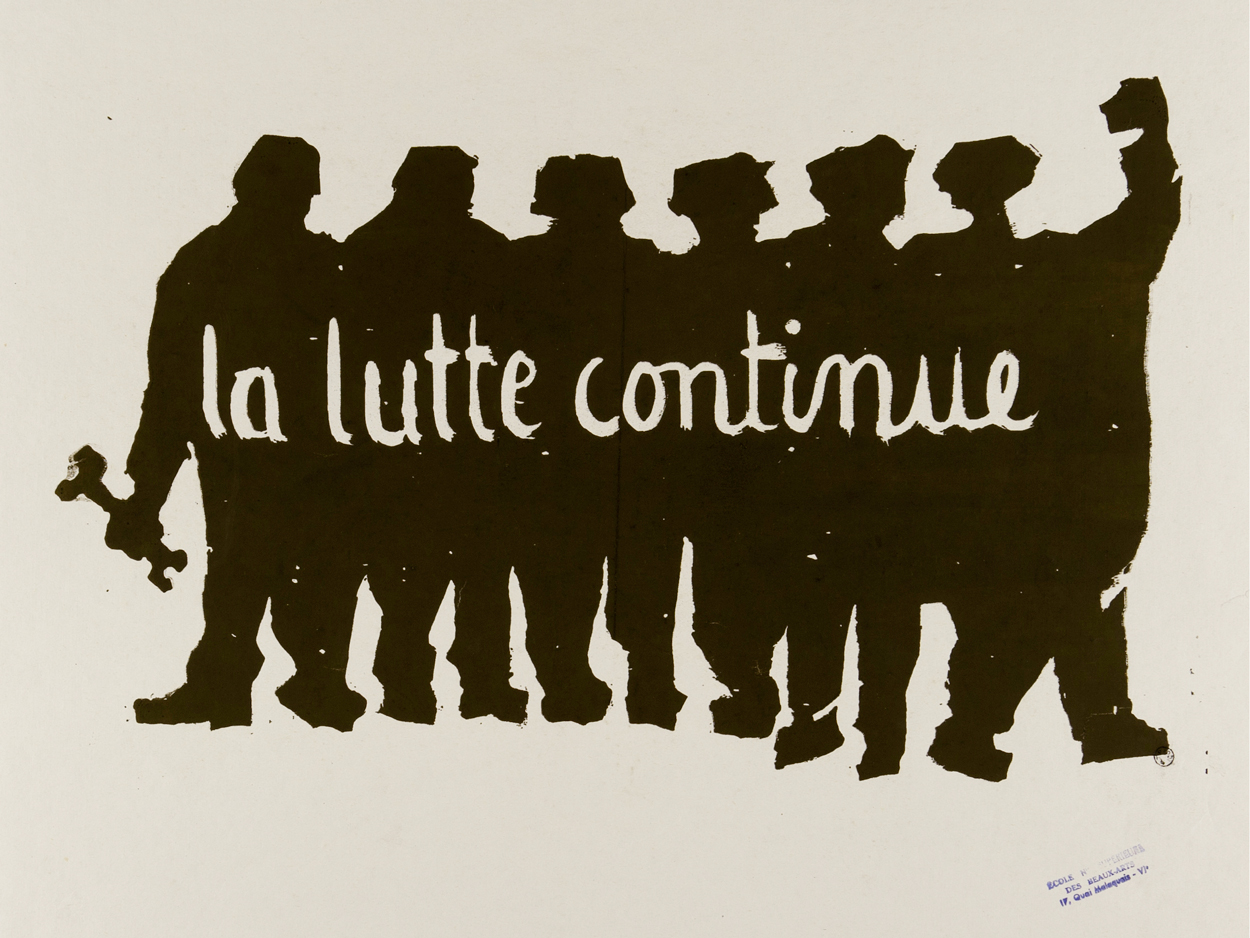
May 1968 and Protest Pieces: To Arts, Citizens!
Beginning in the summer of 1968, the National Museum of Popular Arts and Traditions (MNATP) – the Mucem’s predecessor – started to compile a series of posters created by students from the Ecole des Beaux-Arts (School of Fine Arts) in Paris which was at the very heart of the demonstrations of May 1968.

Pavé de Mai 68 lancé dans une vitrine du boulevard Saint-Michel, Mucem
1977.62.122
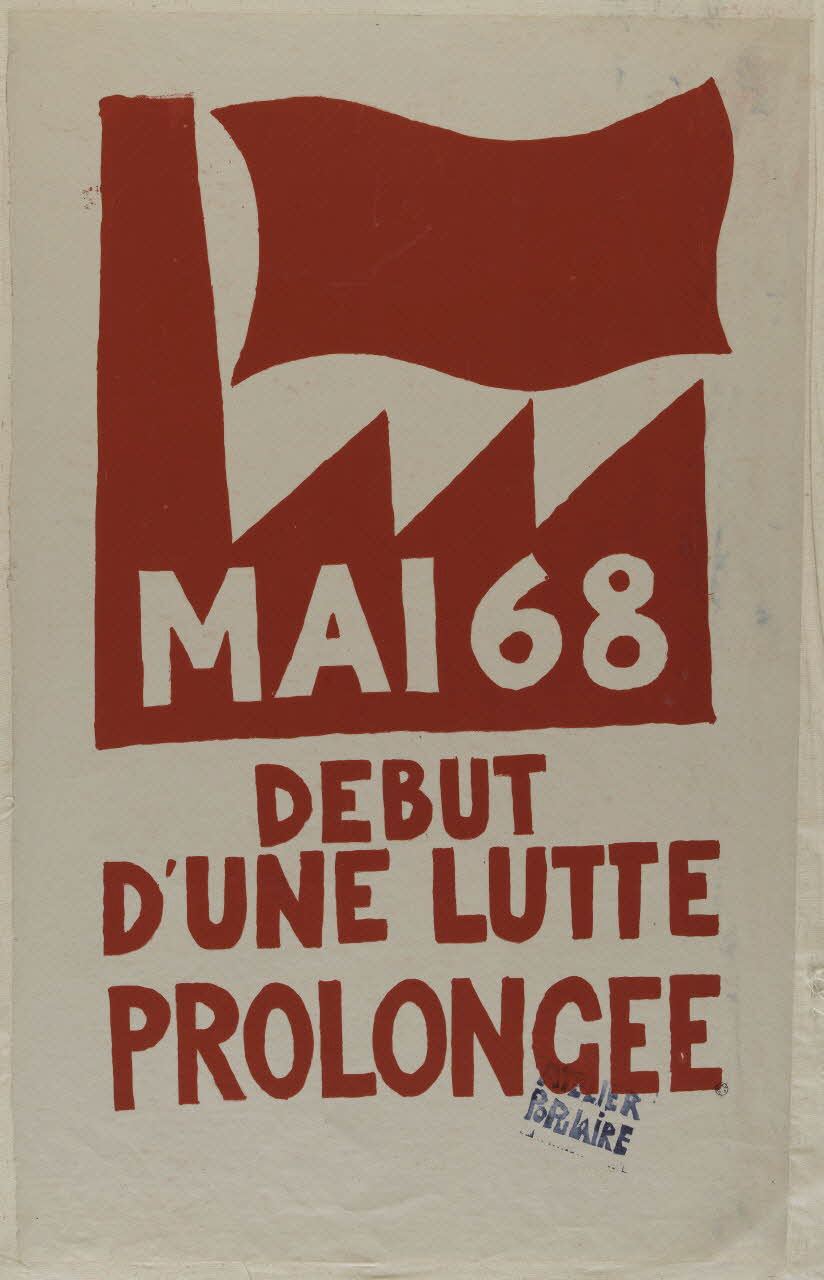
Affiche portant le cachet de l’Atelier populaire ex-école des Beaux-Arts
1968.48.12
The first student movement of May 1968 called for a profound reform of each level of the education system in France, amongst other social and cultural demands. During those events, universities and certain graduate schools became places for thought and for developing new forms of teaching, as well as places for protests and for resisting the forces of law and order. The entire “Latin Quarter”, where many Parisian schools and universities are located, was at the epicentre of sometimes violent demonstrations. The Mucem has preserved a granite cobblestone thrown by demonstrators through the window of a hatter’s shop on Boulevard Saint-Michel on 25 May 1968, that was acquired by the museum along with the rest of the shop.
By that date, students had already been occupying the School of Fine Arts for 10 days. They organized an ex-School of Fine Arts “Popular Studio” or “Atelier populaire” there, which is also how they signed some of their pieces. The studio printed and sold lithographs to finance the student movement. But those pieces had such success amongst the demonstrators that a faster method – silkscreen printing – had to be adopted, so as to produce more than 2,000 posters daily.
The first student movement of May 1968 called for a profound reform of each level of the education system in France, amongst other social and cultural demands. During those events, universities and certain graduate schools became places for thought and for developing new forms of teaching, as well as places for protests and for resisting the forces of law and order. The entire “Latin Quarter”, where many Parisian schools and universities are located, was at the epicentre of sometimes violent demonstrations. The Mucem has preserved a granite cobblestone thrown by demonstrators through the window of a hatter’s shop on Boulevard Saint-Michel on 25 May 1968, that was acquired by the museum along with the rest of the shop.
By that date, students had already been occupying the School of Fine Arts for 10 days. They organized an ex-School of Fine Arts “Popular Studio” or “Atelier populaire” there, which is also how they signed some of their pieces. The studio printed and sold lithographs to finance the student movement. But those pieces had such success amongst the demonstrators that a faster method – silkscreen printing – had to be adopted, so as to produce more than 2,000 posters daily.
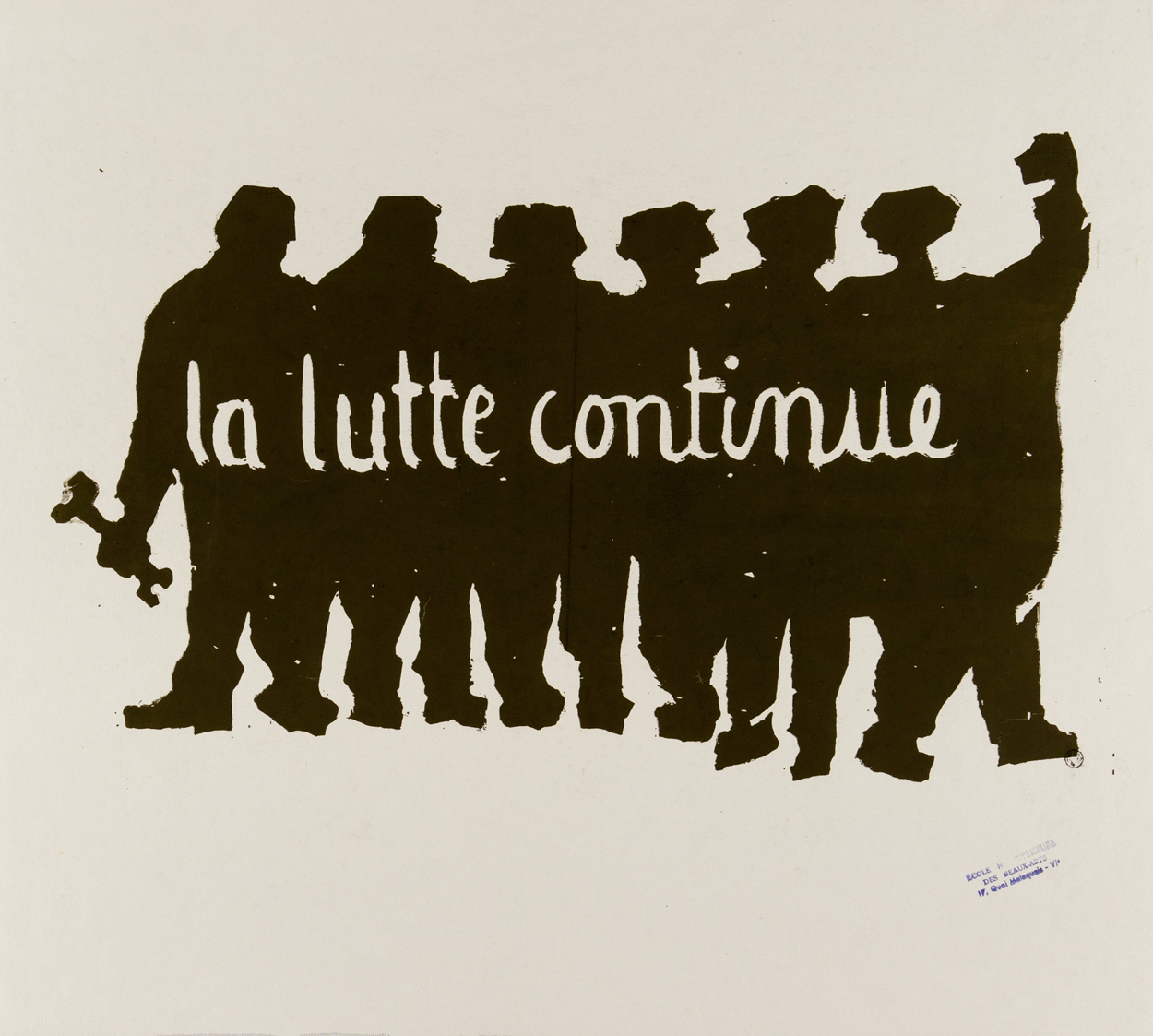
Affiche exprimant la cohésion du mouvement contestataire, 1968 Mucem 48.4
1968.48.17
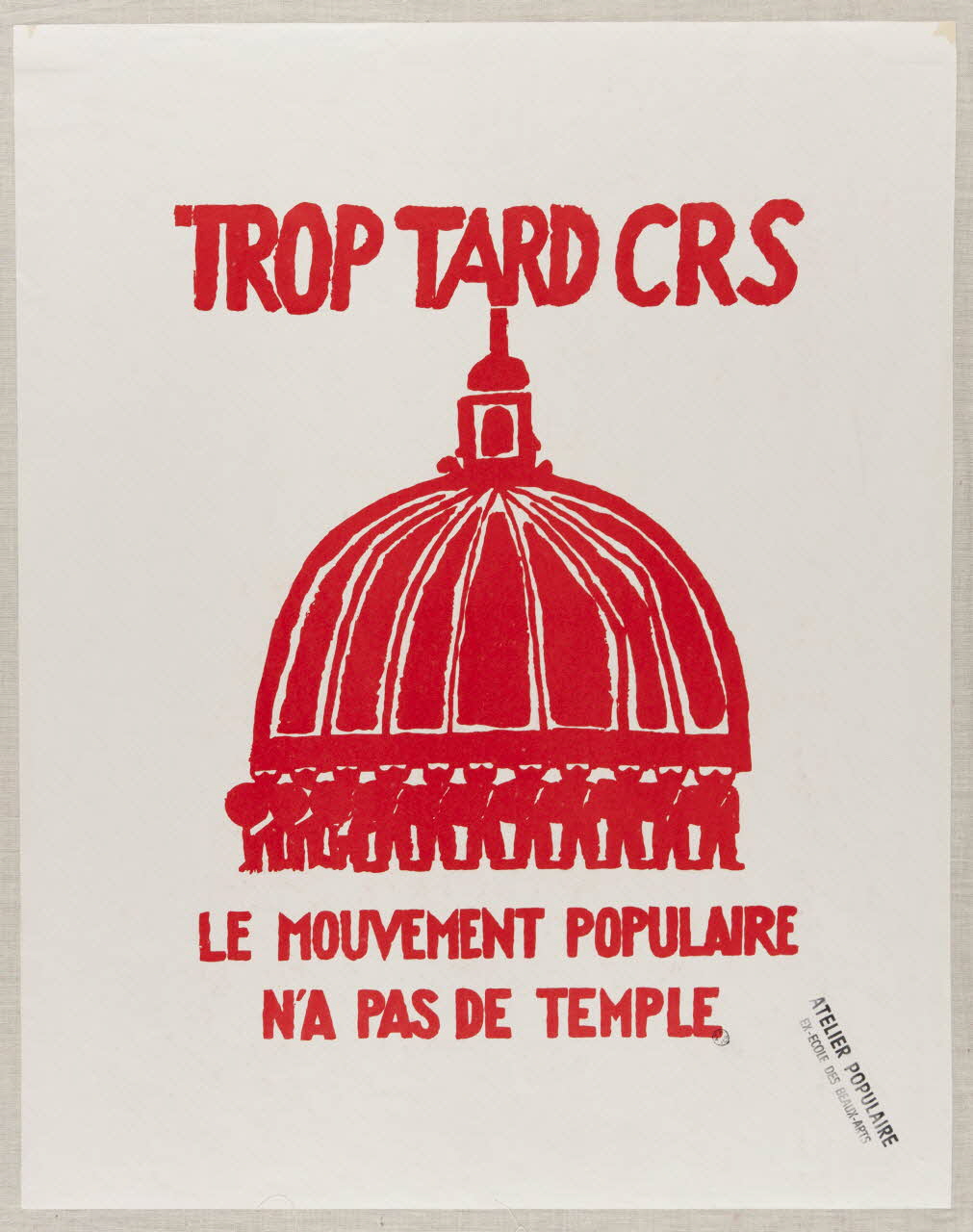
Affiches dénonçant la répression policière, Mucem
1968.48.10
Demands!
The social demands expressed in the posters preserved by the Mucem were representative of the movement’s convictions and expectations. Messages denouncing the lack of freedom of the media (press, radio and television) were prominently featured. The ORTF (French Radio and Television Broadcasting Agency), whose logo made of ellipses was replaced with barbed wire, a symbol of repression and prohibition, was accused of being under the thumb of a conservative, reactionary government controlled by General de Gaulle. For example, one poster depicted a gesticulating figure wearing a military uniform and a two star brigadier’s kepi, like de Gaulle. But the odd-looking general’s head was replaced by a television monitor – the very one that demonstrators claimed was broadcasting the voice of the Government – and its limbs were marked with the acronyms for the leading French television and radio channels: the ORTF, as the torso and main organ of the modern monster, as well as RTL and EUR.1 (for Europe 1), as its menacing arms. Another poster showing the Republic as gagged or censored criticized moral censure, imposed in the form of a white rectangle appearing at the bottom of the television screen to indicate a programme whose content was judged indecent. This type of measure ran contrary to the aspirations of sexual freedom harboured by the young activists of May 1968.
The face of General de Gaulle, then President of the Republic, was a regular feature on these protest posters. For students in 1968, the former Resistance leader had lost the prestige he had enjoyed after Liberation. The new generation, born after the Second World War, did not experience the war but was raised in a France that had been traumatized by the Occupation and the memory of Nazism. For that reason, in a particularly provocative gesture, the General was portrayed as yesterday’s enemy, his arm raised in a Nazi salute. And behind the General, the entire Government was targeted, for example through the person of Roger Frey, former Minister of the Interior, as was police repression.
The Mucem’s posters include a number in support of strikes, that were on the rise at universities and in the Parisian transit system in the summer of ‘68, and especially at factories like those of Renault, in Boulogne-Billancourt and Flins, as well as Citroën’s.
In that same vein, the strength of the ongoing struggle was often referenced by graphic representations and visual interplay symbolizing the demonstrators’ unity, for example tightly grouped together in the shape of an arrow, a symbol of action and progress. To support labour demands, workers were also portrayed as united, namely in a silhouette forming an integrated, interdependent body or solidly joined together, united against a boss trying to separate them.
The museum at the heart of current affairs
The Paris School of Fine Arts was evacuated by the municipal police in the early morning of 28 June 1968. The police only found a hundred or so posters and a few paint cans, not the underground printing press on which they had hoped to lay their hands. The troublemaking poster artists had undoubtedly anticipated the raid and had relocated their studio in advance. But the Mucem’s archives show that the students of the Popular Studio brought some of their posters to the museum, for the attention of its director, Georges Henri Rivière, on 4 July 1968, barely a week after the School of Fine Arts was evacuated. The archives also show that those posters were not the first to be delivered.
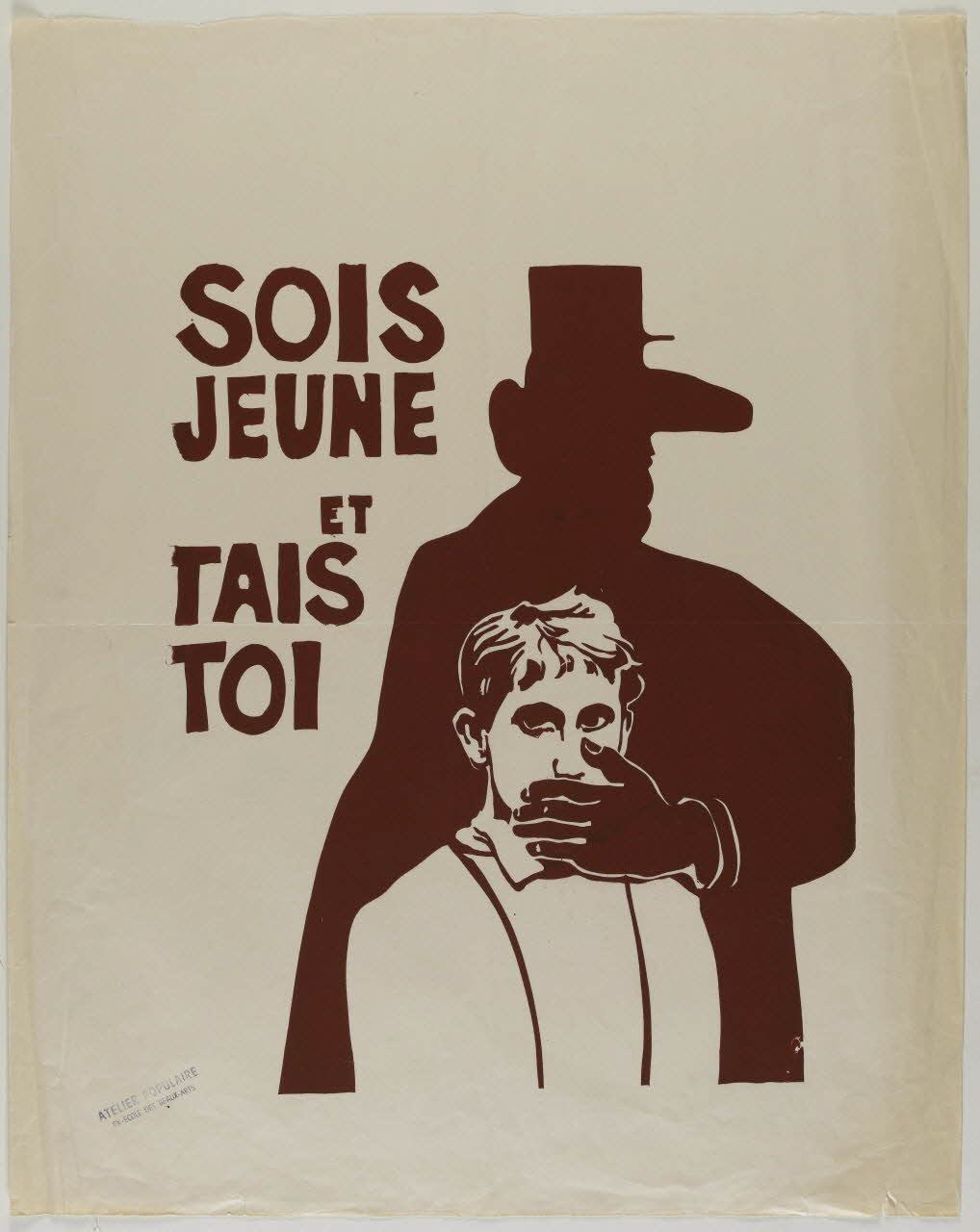
Une affiche devenue une icône de la contestation en mai 68 et au-delà, Mucem
1968.48.34
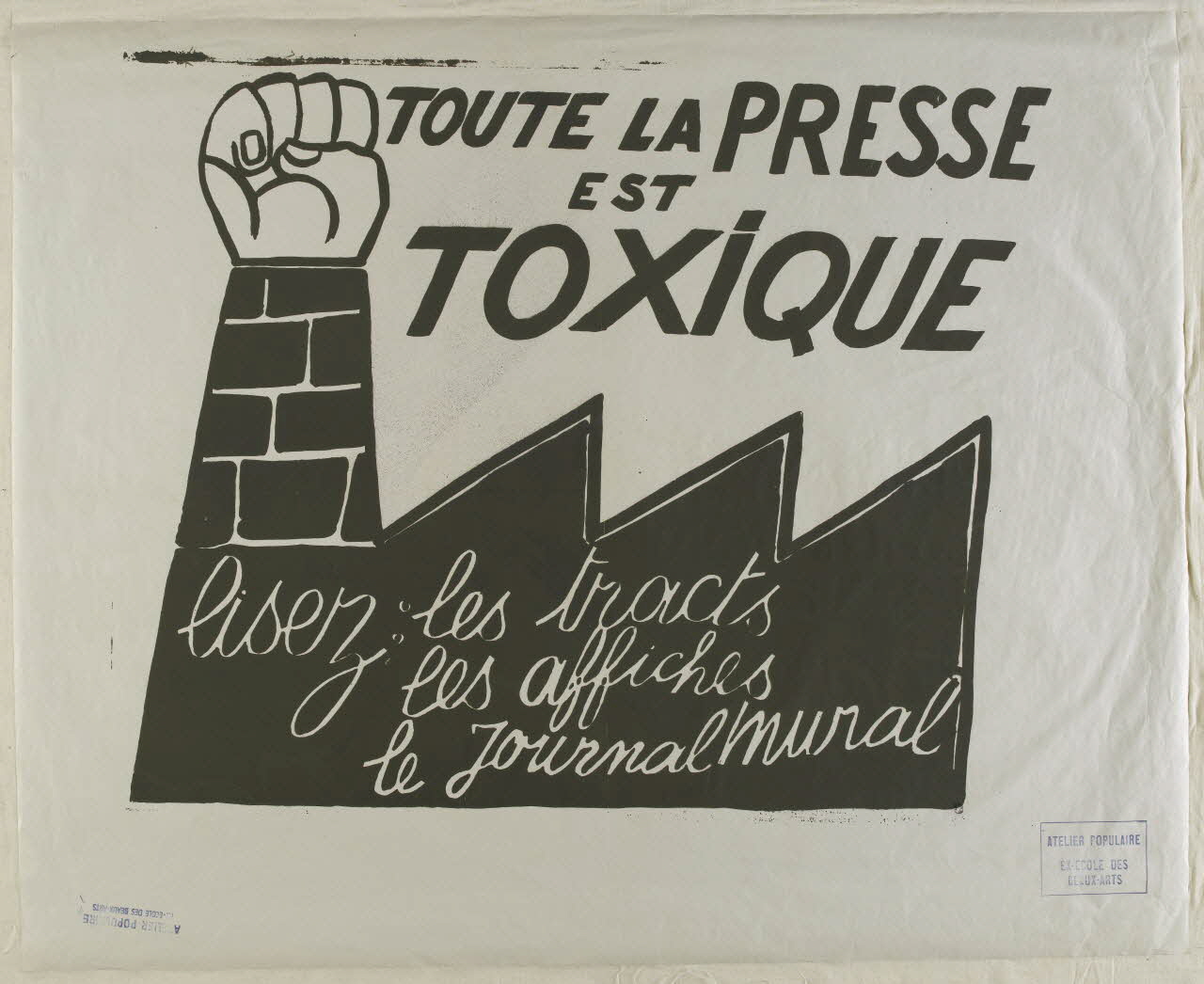
Affiche de Mai 68 avec le symbole de l’usine en lutte, Mucem
1968.48.22
Posters that left a mark on history
For the MNATP, these pieces were major acquisitions in terms of examples of popular art. Created by art students, their visual quality was almost professional, and they depicted the burning issues of graphic creation in the late 1960s. Today, they are of undeniable artistic interest, and some of them even made a mark on history. This is true, for example, of a drawing of the outline of General de Gaulle, recognizable for his large nose and ears and for the kepi he was often shown wearing in cartoons, placing his hand over the mouth of a young man whose eyes are focused on the spectator, putting them on the spot. The text appearing alongside it, “Sois jeune et tais toi” (“Be young and shut up”), became the emblematic slogan of a generation of youth demanding the right to their opinions and to participation in university administration, as well as the country’s political sphere. Adapted or twisted, it would become a rallying cry for other causes, particularly feminist movements that ironically declaimed, “Sois belle et tais-toi” (“Be beautiful and shut up”). It was also taken up in 2016 by opponents of the El Khomri bill (the “labour bill”), under the slogan, “Sois jeune et bats toi” (“Be young and struggle”), with the young man biting the hand trying to silence him. But the silhouette of the oppressor remained the same, that of General de Gaulle.
Other images also became symbols of the struggle, namely that of a factory with a chimney ending in a raised fist. Significantly, it can be found in other Mucem collections, such as a poster for the fight against AIDS, where the fist is wrapped in a condom, and another that was created in response to the terrorist attacks on Charlie Hebdo’s editorial offices in January 2015.
Protest art
It is hard to know whether, in the summer of ‘68, the MNATP had fully grasped these posters’ historical and sociological interest, an interest that is self-evident to us today. It should be noted that the museum had long been interested in popular art as a form of rebellion and protest. At the time, this aspect already existed in a number of popular images and prints, primarily from the French Revolution, that demanded equal rights for citizens and their participation in national politics. The strikes led by the Popular Front (Front Populaire) in 1936 had also interested the museum at the time of its creation, as witnessed by the photographic collections covering the events at the building site for the 1937 World’s Fair and in the workshops of the Paris Metro. The Museum also took an interest in Guignol puppet shows, particularly for its social and subversive dimensions, that of a man of the people who rises up with a smile against the injustices suffered by the little people, going so far as to defy censorship. It is noteworthy – and assuredly no coincidence – that two of the posters play with the motif of the popular puppet, a subject that was dear to the MNATP.
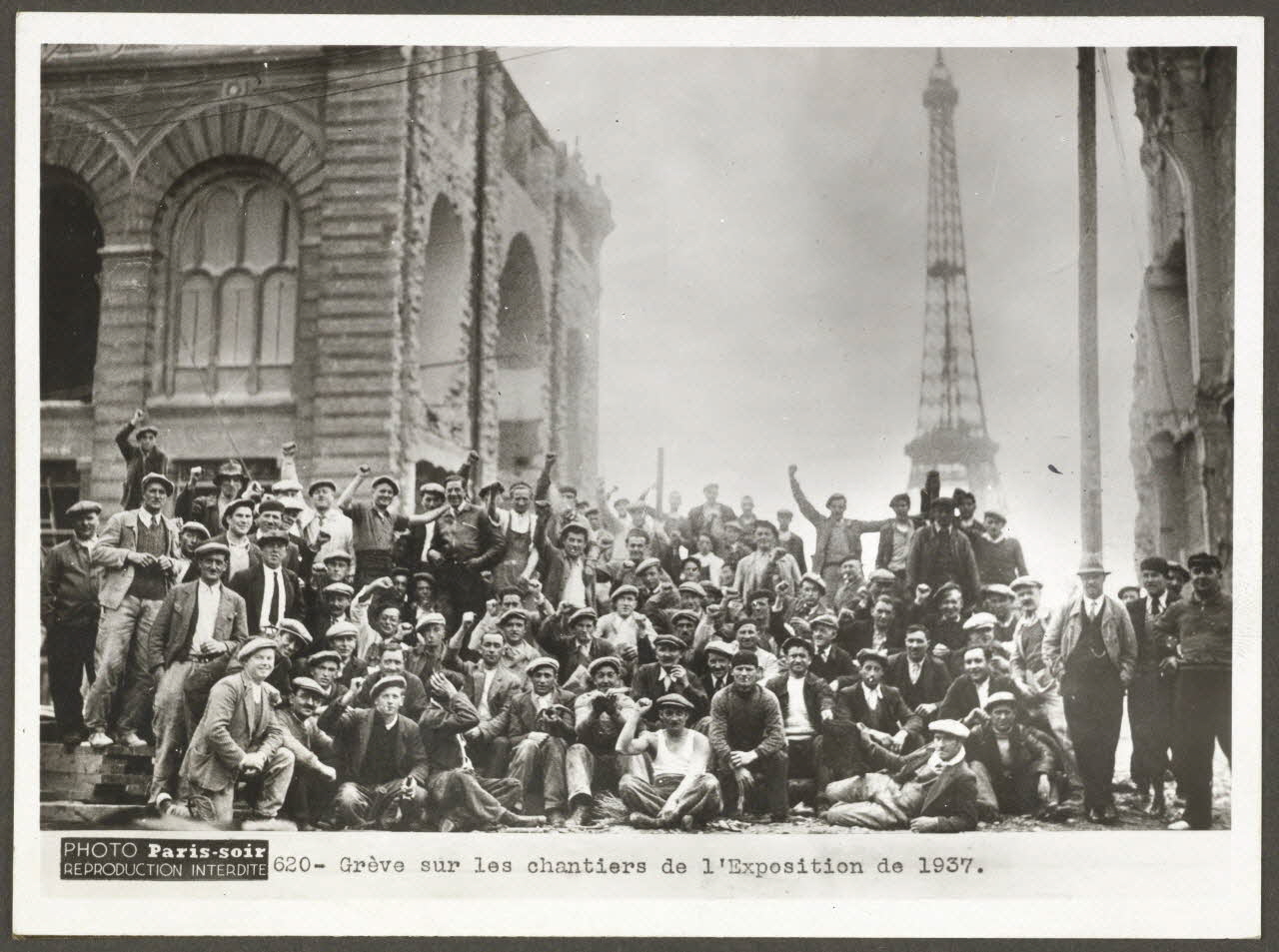
Photos des grèves sur le chantier de l’exposition universelle et dans les ateliers du métro parisien en 1937, acquises la même année par le musé, Mucem
Ph.1937.969
The MNATP, a national ethnographic museum, undoubtedly also examined the anthropological stakes of the upheaval of 1968 with a great deal of interest. The generational conflict and the self-affirmation of young adults, expressed in the poster, “Be young and shut up”, are indeed classic subjects of the societal studies conducted by anthropologists and ethnologists.
It should also be noted that the Mucem continues to take an interest in protest art. For example, Egyptian artist Moataz Nasr’s 18 Days was added to the collections in 2013. He made that piece from objects collected on Tahrir Square in Cairo during the 2011 revolution, as a testimonial to that major event in contemporary Egyptian society.